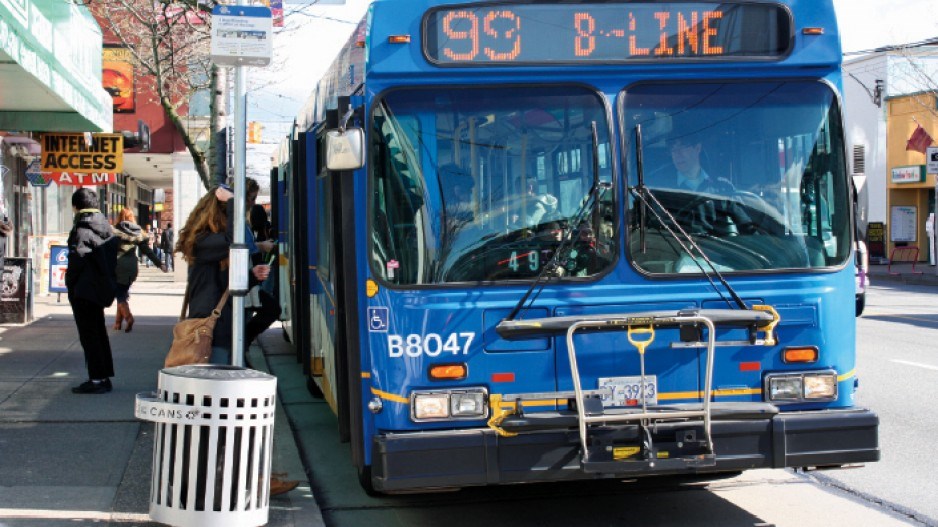With an anticipated increase in population and employment of 150,000 people over the next 30 years, the UBC-Broadway corridor is Vancouver's second-largest business district.
Because of its high concentration of health sciences, tech and research organizations, local experts say the corridor could become a world-class collaborative technology hub with economic potential so huge that it would rival Toronto's MaRS Discovery District, London's Tech City or San Diego's CONNECT (see sidebar).
But that could remain a pipedream as long as the area continues to have insufficient public transportation and stakeholder collaboration to support the requirements of such a direction.
The findings of a well-publicized KPMG report released last month, prepared for the University of British Columbia and the City of Vancouver, recommends investing in rail-based transit along the length of what is North America's busiest bus corridor.
The report points out that the inconvenience resulting from increasing gridlock and insufficient transit discourages businesses, talent and venture capital.
The Vancouver Economic Commission (VEC) identified technology as the city's fastest-growing sector in its Vancouver Economic Action Strategy, released late 2011, and has found that 25% of the city's tech organizations are currently based around the corridor.
"[Broadway has] the fast-growing technology companies and top-notch education institutions, but we really need to link the people, the talent, the education institutions and the jobs together," said VEC acting CEO Joan Evangolan, explaining that this means rapid transit – specifically, a subway system – is required.
<strong>Business group needed</strong>
At the heart of the issue is a lack of a collective voice among Broadway stakeholders. Although some pockets along the corridor have business improvement associations (BIAs), including Mount Pleasant and West Broadway, there is no BIA, or any other type of organization, representing the entire route.
Vancouver City Coun. Geoff Meggs said the lack of co-ordination means the area has no identity, which makes it more difficult to pinpoint what should be done to ensure it can realize its potential.
"It would be valuable for the businesses between Arbutus and Main Street to consider some kind of an organization that shines a light on the opportunities there and the number of jobs that are there already. If we did that, we'd see a greater understanding of why investment in transit makes sense."
He emphasized that the organization does not necessarily have to be a BIA. It could take a different form, he said, as long as it raises the group's profile, which in turn will help to justify investment there.
"It would be good to have the major landowners and employers participate. A non-profit association that advocates for that corridor would be very useful.
"Ideally they would organize themselves."
<strong>What happens next?</strong>
Despite all the debate, nothing has been decided about public transit in the corridor, and that's unlikely to change any time soon.
"We have no money to invest in anything new now," said Bob Paddon, TransLink's executive vice-president, strategic planning and public affairs.
He said $3.2 billion in senior government funding has been invested into the region over the last seven years to bankroll the Canada and Evergreen SkyTrain lines and that there is currently no new money.
"Until about the middle of this decade, it is highly unlikely there will be any senior government money available to invest in anything."
Now is the time to do the planning for the region as a whole, he said, to be ready when funding is available.
Pointing out that the Millennium and Canada lines were discussed for two decades before anything materialized, Paddon said it often takes a long time to get agreement on major projects.
"We want to have a full investment strategy for this region that would cover the next 15 years in place by the end of this year or early next year. Even when you have a decision, it's almost seven years to get something from start to finish."
And even with an agreement, Paddon pointed out that nothing can be done without funding.
Meggs agreed that it's time to get started."We've been discussing this corridor now for a long time," he said. "It has had its rapid transit investments deferred in the '90s and again in the early part of this decade.
"It can not be deferred indefinitely."




